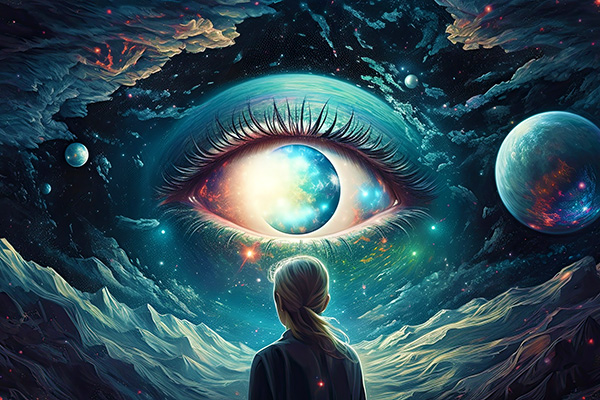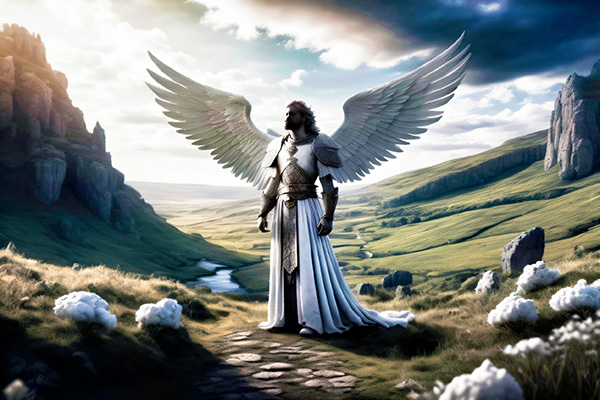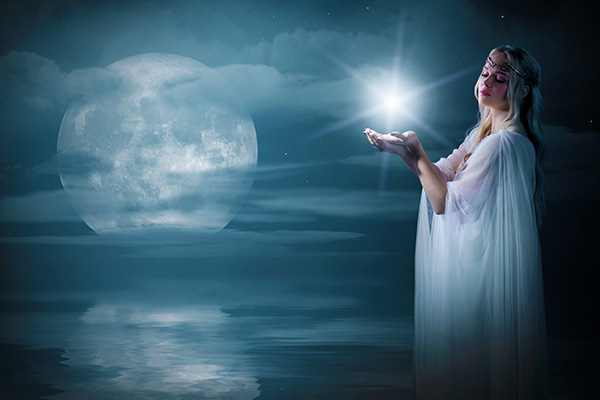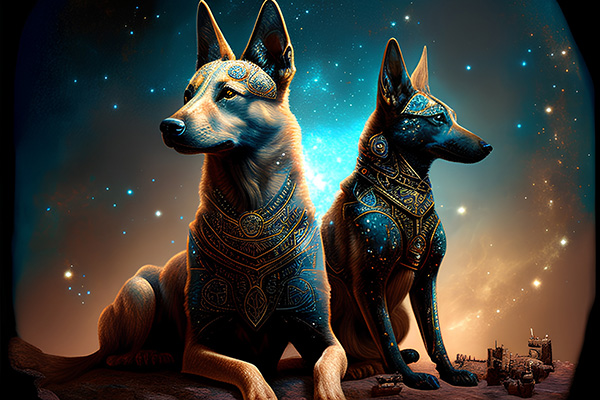paganism
Understanding Psychic Predictions
 There are many misconceptions about psychic predictions. The first misconception is that a psychic prediction is static and unchanging. The second big myth is that psychics are omniscient deities who always see everything exactly as it will happen.
There are many misconceptions about psychic predictions. The first misconception is that a psychic prediction is static and unchanging. The second big myth is that psychics are omniscient deities who always see everything exactly as it will happen.
Even if we were able to predict every possible outcome for the rest of your life, many of those predictions will become inaccurate or even a complete failure over time because the future is flexible and fluid.
The future that a psychic foresees in a reading today will look slightly different in a month’s time, and will inevitably look significantly different in a year’s time. This is what distinguishes true psychic reading from fortune-telling.
Our destiny is constantly being shaped and adjusted by the creative capacity that exists within each of us. Each human being is the physical expression of a spirit essence with free will that allows us to create and navigate our reality, and direct our destiny. Our spirit, soul or consciousness shapes our daily reality and determines the course of our life journey. This process of creation is called manifestation.
Manifestation refers to the metaphysical idea that our thoughts, beliefs, and intentions produce tangible results in the external world. Manifestation is, in fact, the foundation of our very existence, for our present life journey as a spirit essence in human form is, in fact, also a manifestation!
Invoking Archangel Michael In Your Spiritual Practice
 Archangel Michael, the divine warrior and champion of truth and justice, is a powerful figure in many spiritual traditions. He is a prominent figure in Judaism, Christianity, Islam, the Baha’i Faith, and Neo-Paganism.
Archangel Michael, the divine warrior and champion of truth and justice, is a powerful figure in many spiritual traditions. He is a prominent figure in Judaism, Christianity, Islam, the Baha’i Faith, and Neo-Paganism.
His name in Hebrew means “Who is like the Lord?” and his title “Archangel” means “Prince of Angels.” Michael is the leader of the angelic realm and is known for his strength, courage, and protection. He fights for good, empowers the faithful, and accompanies the souls of the righteous to heaven.
He is typically depicted as a warrior, complete with sword and shield. He is also often shown defeating a dragon or other monstrous creature. In Christianity, he is specifically mentioned in the Book of Revelation as battling Satan.
In some depictions, he is shown holding scales. This is a reference to his position as guardian of the dead as their souls leave the earth. Just as the Roman god Mercury accompanied souls to the underworld, Michael is said to accompany the recently deceased on their journey to the other side.
Michael is a venerable spiritual figure and is often invoked in prayer, meditation, and other spiritual practices. Believers invoke his presence for protection, guidance, and spiritual strength.
Navigating Loneliness During the Holidays
 The holiday season is traditionally portrayed as a time of togetherness, love, joy, and belonging. We are inundated with media images of families gathered around a festive table, friends celebrating, and communities coming together.
The holiday season is traditionally portrayed as a time of togetherness, love, joy, and belonging. We are inundated with media images of families gathered around a festive table, friends celebrating, and communities coming together.
Paradoxically, for many people, this time of year is instead filled with feelings of loneliness, isolation and disconnection.
The root cause is the societal stereotype and cultural assumption that everyone should be joyful, happy, and surrounded by loved ones during the holidays. If you’re not, for whatever reason, it can lead to feelings of inadequacy, isolation, and social failure.
Holiday loneliness is exacerbated by the stark contrast between our actual circumstances and the commercially driven, idealized versions of holiday gatherings and celebrations we see in advertisements, television shows, movies, and social media. This increases feelings of disconnection, low self-esteem, and even depression.
Loneliness during the holidays can have a significant impact on mental health. Feelings of isolation and disconnection during this time of year can exacerbate existing mental health issues and lead to the development of new ones. The constant reminders of togetherness and joy, combined with a lack of social connections and meaningful interactions, can increase feelings of loneliness, leading to emotional distress, feelings of emptiness and hopelessness, and a decline in overall well-being.
The Powerful Practice Of Color-Based Affirmation
 Affirmations are known to be a powerful spiritual practice for manifestation, self-healing, and personal empowerment.
Affirmations are known to be a powerful spiritual practice for manifestation, self-healing, and personal empowerment.
What is less well known is that associating your affirmations or intentions with specific colors can greatly enhance your practice by infusing it with the powerful symbolism, purposeful energy frequencies, and mind-altering psychoactive effects of different colors. It aligns our energy vibration more powerfully with the desired effect or outcome.
The practice of color-based affirmation, also known as ‘color therapy affirmations’ or ‘rainbow affirmations,’ draws inspiration from a variety of traditions and disciplines, including spirituality, metaphysics, chromotherapy, and color psychology.
Color has a rich history of symbolic significance that spans all cultures and many centuries.
Ancient civilizations recognized both the metaphysical and therapeutic power of color, while many religions and spiritual wisdom traditions have an intricate tapestry of color symbolism in their teachings and practices. The ancient Egyptians, for example, recognized the healing power of color. They had a sophisticated understanding of color that they used in their temples and rituals.
Full Moon Release Ritual
 Tomorrow’s Gemini Full Moon will be the last full moon before the winter solstice. Traditionally also known as the Beaver Moon, Frost Moon, or Mourning Moon, this full moon is a perfect time for introspection, spiritual contemplation and inner transformation.
Tomorrow’s Gemini Full Moon will be the last full moon before the winter solstice. Traditionally also known as the Beaver Moon, Frost Moon, or Mourning Moon, this full moon is a perfect time for introspection, spiritual contemplation and inner transformation.
The November Full Moon invites us to gather our resources, release what no longer serves us, and embrace the transformative power of the changing seasons.
As we prepare for winter within and without, we can cultivate the resilience and wisdom necessary to meet the challenges and opportunities that lie ahead. The ideal way to do this is through a full moon ritual.
Full moon release rituals have been practiced for centuries in various cultures and spiritual traditions. The goal of these rituals is to create space for growth, transformation, and new beginnings. The phases of the moon are traditionally associated with cycles of growth, decline, and renewal, making the full moon a particularly powerful time to release negative energies, unwanted patterns, and emotions that no longer serve us.
The ancient Egyptians worshipped the moon goddess Isis, who symbolized fertility, magic, and transformation. They believed that the full moon had the power to cleanse and purify.
The Mythical Legacy Of Dogs
 The cat isn’t the only pet with a long history of myth and legend. Dogs have played an important role in human culture and spirituality for centuries.
The cat isn’t the only pet with a long history of myth and legend. Dogs have played an important role in human culture and spirituality for centuries.
The dog, or “man’s best friend,” is the subject of many magical tales, wisdom traditions, and folklore throughout the world. Like the cat, dogs were companions of the ancients and are still considered symbols of loyalty, courage and protection.
In Greek mythology, dogs are associated with the goddess Hecate, who is also known as the “dog goddess.” She is the goddess of witchcraft, magic, and the crossroads, and is typically depicted in ancient Greek art with a pack of dogs at her side.
Today, the brightest star in the night sky, Sirius, is also known as the Dog Star, because it is traditionally seen as the protector of the night sky. In many cultures, Sirius has been associated with dogs because of its brightness and prominence.
Perhaps the most famous dog in Greek mythology is Cerberus, the three-headed guardian of the underworld. Cerberus not only prevented the dead from leaving the underworld, but also the living from entering it. He was finally captured by the hero Heracles in one of his twelve labors. Another famous Greek dog is Laelaps, a swift dog given by the god Zeus to the hunter Actaeon. Laelaps was so fast that he could catch any prey, but he was also cursed to always catch his prey.
